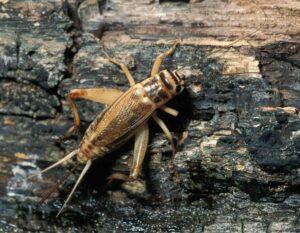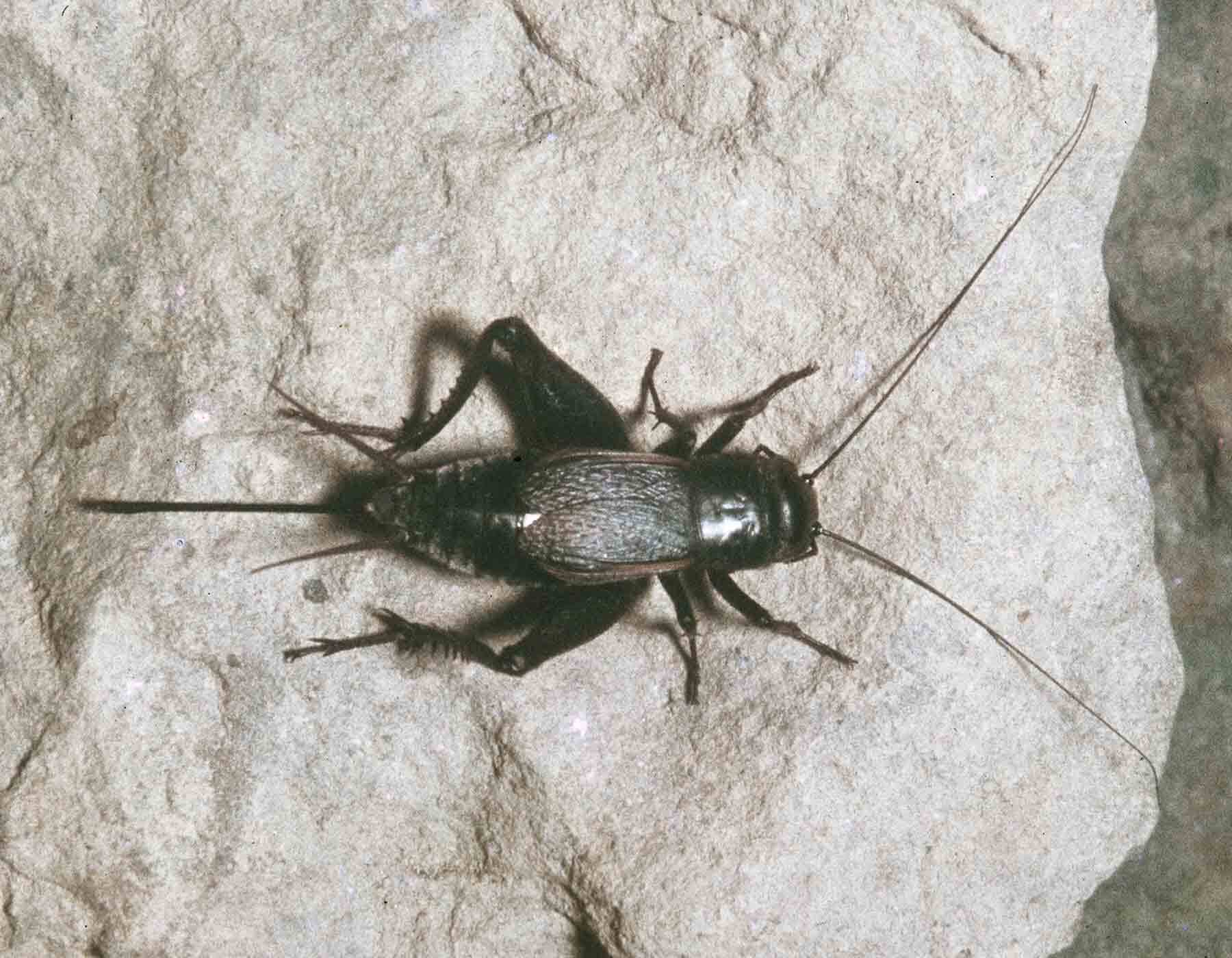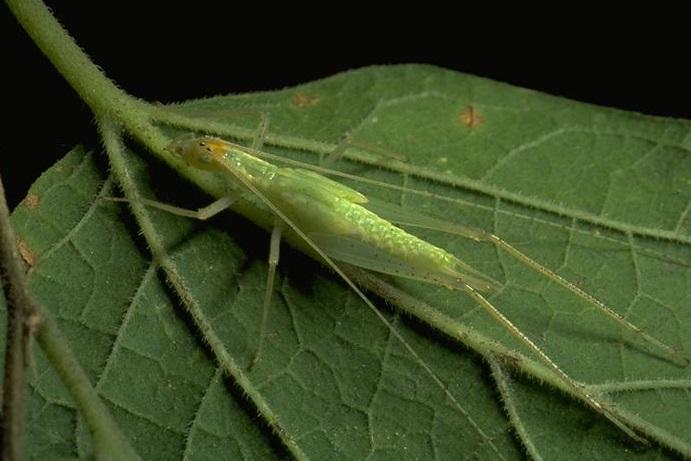House Cricket (Acheta domesticus)
Updated on
28/10/2022House cricket is probably one of the most recognizable insects, thanks to the distinct chirping sounds they make by rubbing their wings together.
This species’ popularity as live pet food has helped it spread worldwide, becoming household pests. Interestingly, they can also be kept as pets, especially in Japan and China.
Scientific Classification
- Class:Insecta
- Order:Orthoptera
- Suborder:Ensifera
- Family:Gryllidae
- Genus:Acheta
- Species:A. domesticus
Conservation Status
Description

They are a relatively small species of crickets, growing about 0.6 to 0.8 inches (16-20 mm) long. The body is dark brown to yellowish-brown, with three crossband markings on the head. They have a pair of threadlike antennae that is usually longer than the body. Their two long wings lie flat on their back.
Females and males look similar, apart from the 0.5-inch (12 mm) long brown-black ovipositor at the females’ rear end. Males also have prominent cerci.
Juveniles or nymphs look like adults, but they don’t have wings.
Distribution: Originally from south-western Asia, but now spread throughout the world.
Habitat: Fields, grasslands, woods, prairies, as well as lawns and roadsides in urban areas; they may also nest inside houses
Do They Bite: No; even if they do on some extremely rare occasions, their mouthparts cannot penetrate human skin
Lifespan: Around 3 months; can live for up to a year as pets
Predators: Small snakes, frogs, rats, salamanders, mantes, spiders, beetles, wasps, and birds
Behavior and Characteristics
Diet
In the wild, these omnivorous crickets can have a varied diet, including fruits, seeds, leaves, grass, and small insects. They can even eat the remains of other dead house crickets. So, their pet diet mainly comprises fruits, vegetables, and food grains.
When nesting in houses as pests, they will eat anything they can find, from pet food to fabric, carpet, and wool.
Overwintering
These crickets do not hibernate or have any particular overwintering stage. They take shelter inside buildings or in dumps and debris to survive the cold season, using the heat from their fermentation process.
Life Cycle
Their reproduction happens in temperatures between 79°F and 90°F. The females lay their eggs in any damp substrate, including moss, wet sand, and moist areas in or around houses. Their life cycle, from eggs to nymph to adult, takes around 2-3 months to complete.
Getting Rid of House Crickets
Like any pests, getting rid of house crickets is not easy. The first thing to do would be to identify their nest, which will probably be in some dark, moist area, like under the kitchen sink or inside plumbing. Application of boric acid and commercial cricket treatments or using sticky glue traps may help.
It is essential to wash hands with soap after handling house crickets or their nest material as they may carry parasitic diseases like salmonella and E. coli.
FAQs
The adult house crickets can fly with their pair of fully developed wings. However, they prefer moving by hopping or crawling.
Source
education.mdc.mo.gov, insectidentification.org, assets-us-01.kc-usercontent.com, bugguide.net, bcms-files.s3.amazonaws.com, s99.freeconvert.com











